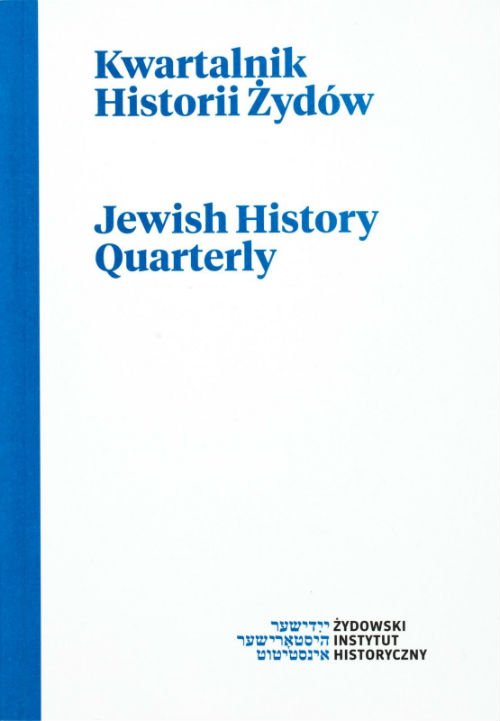Miejsce schronienia czy zbawienia: Polska w mesjańskich wyobrażeniach żydów I Rzeczpospolitej
A Refuge or Salvation: Poland in the Messianic Images Conjured up by the Jews of the First Republic
Author(s): Jan DoktórSubject(s): History
Published by: Żydowski Instytut Historyczny
Keywords: Kojdanower; Polish Jews; Poland; Chassidim; Messianism; Frankism
Summary/Abstract: Historians have long been pointing to the amazing lack of the awareness of exile, of living in a diaspora among Polish Jews in the First Republic. A recurrent statement in rabbinical responses and homilies of those times was: “It seems to them they found solid ground under their feet, that their refuge has come to an end”. In the late Middle Ages and early Modern times, the positive attitude of the Jews to the Polish state could easily be explained by the fact that Poland was a haven for one tide of Jewish refugees after another. However, surprisingly, this sense of domiciliation survived among Polish Jews also in the 17th and 18th centuries, which were the centuries of wars, pogroms, migrations and recurrent accusations of ritual murders. This shows a huge chasm between historiography and Jewish sources from that period, which have been almost totally ignored by that historiography. The best illustration of the Jews’ attitude toward Poland will be its place in the history of redemption, i.e., in the Messianic visions. From this point of view, the crucial question is whether Poland was considered a temporary shelter, until the Messiah comes, or a place where the Jews felt well settled. An especially moving testimony of tying Messianist hopes with Poland was left by the preacher and Messianist, Zvi Hirsh Kojdanower from Vilnius, member of Jehuda He-Hasid’s chewrat hasidim. In a collection of homilies published in 1705 and entitled Kaw ha-jashar, he quoted traditions which he himself heard from rabbi Heshel Coref. Coref was reportedly portraying the tragedy of the Khmelnytsky Uprising as havlei ha-mashiach – the Messiah’s birth pangs, and predict that redemption will occur precisely in the Polish Republic and that it will be here that the Messiah will commence his labours. This “Messiah’s birth pangs” story, which according to Heshel Coref, was to define the place of redemption, was later referred to by Jakub Frank, which proves that this tradition was firmly established in the Polish Republic. Therefore during a public debate with the Podolya rabbis before the Kamenets Consistory Frank’s followers declared they did not believe in the recapture of Jerusalem by the Jews. The Frankists’ claims were printed as their “Manifesto” in Lvov in two versions: in Polish and in Hebrew, in 2,000 copies, which were distributed among the Jews. Intra-Jewish propaganda was the chief objective of the exercise and the authors must have been confident about an enthusiastic response. In Jewish writings from the times of the First Republic, in Hebrew or in Jewish, hence inaccessible to the Christian reader, it is hard to come across an ill feeling about the Republic. Neither has it ever been negatively juxtaposed to another country. Until the end, the Polish Republic remained a positive exception for the Jewish critic. That picture only began to change after its fall, in the 19th century.
Journal: Kwartalnik Historii Żydów
- Issue Year: 249/2014
- Issue No: 01
- Page Range: 42-59
- Page Count: 18
- Language: Polish

